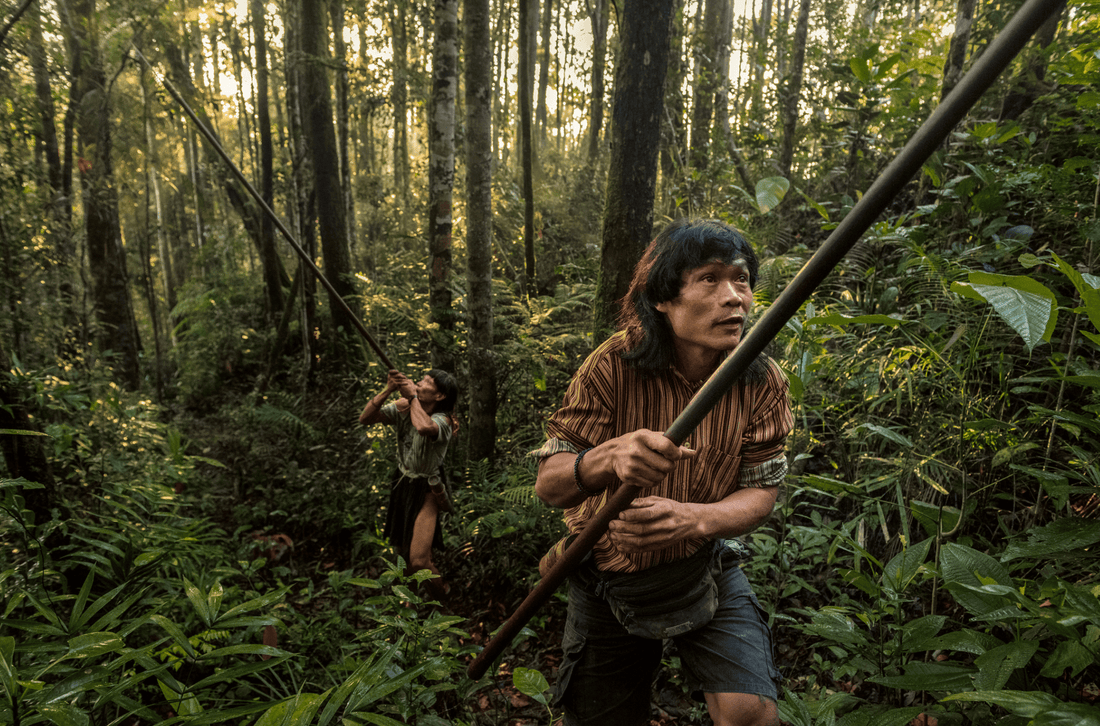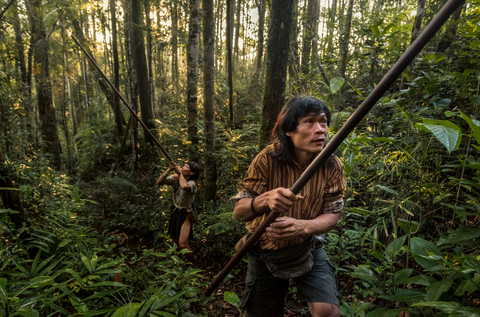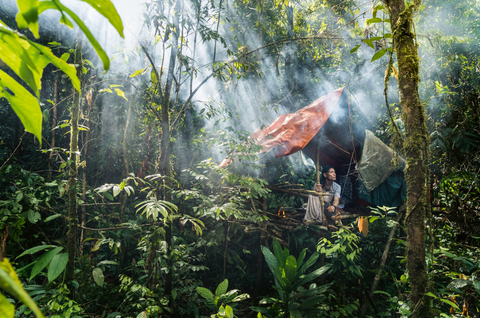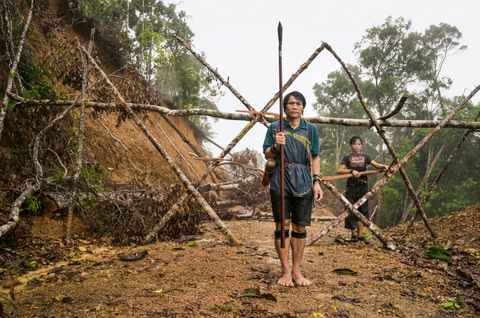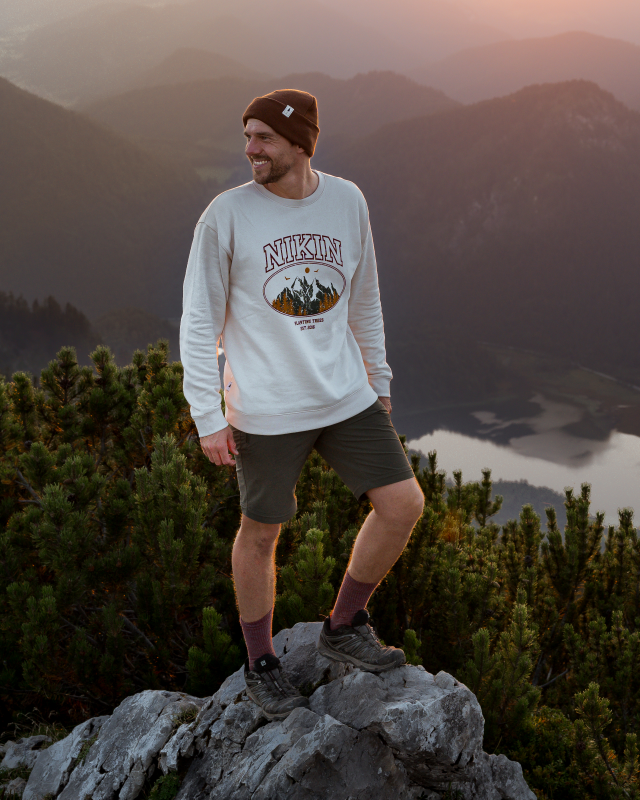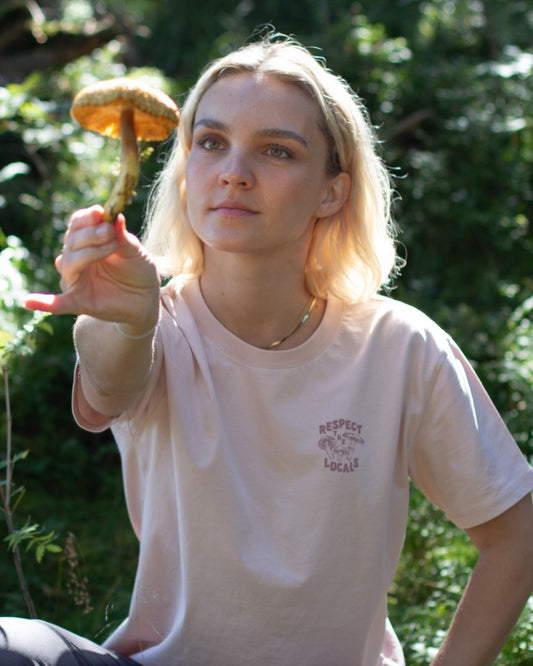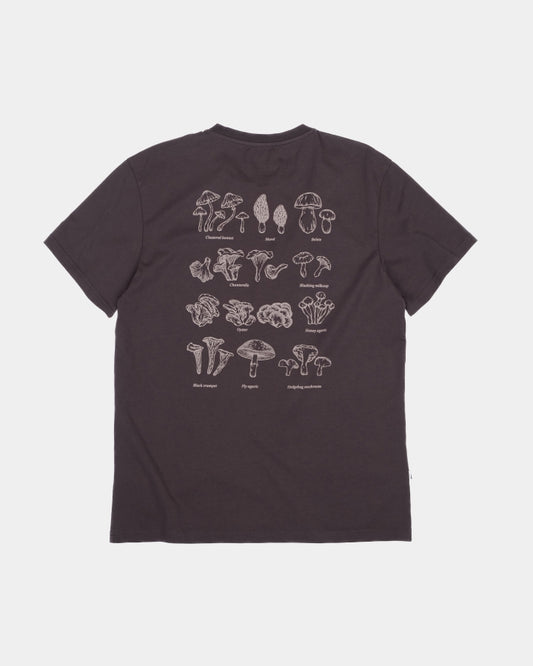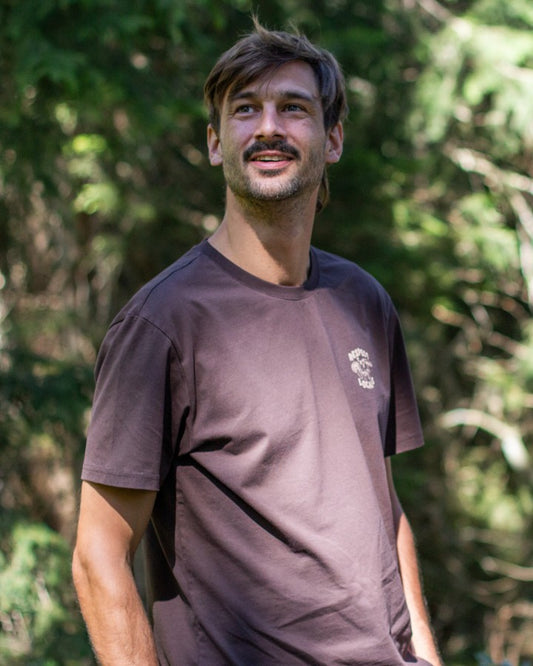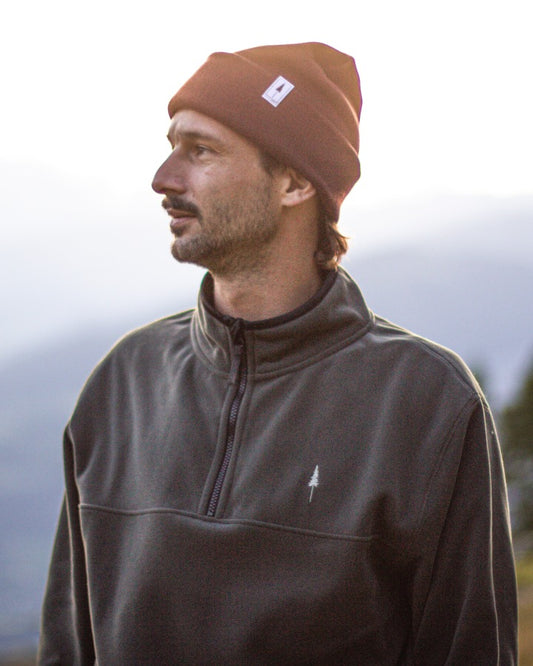The rainforest of Sarawak on Borneo is the home and livelihood of the Penan. Twenty years after the environmental activist Bruno Manser fought with the Penan against the cutting down of the trees, the forest is still threatened. The photographer Tomas Wüthrich gives with his book Doomed Paradise gives an impressive insight into their life in the forest.
The rainforest of Sarawak on Borneo is the home and livelihood of the Penan. Twenty years after the environmental activist Bruno Manser fought with the Penan against the cutting down of the trees, the forest is still threatened. In his book Doomed Paradise, photographer Tomas Wüthrich gives an impressive insight into their life in the forest.
© Tomas Wüthrich
Since 2014, photographer Tomas Wüthrich has been documenting the everyday life and culture of the Penan. Originally nomadic in the jungles of Sarawak on Borneo, the people are threatened by illegal logging of the rainforest. The Penan first came to international attention in the 1980s through the Swiss environmental activist Bruno Manser. For years, Manser was passionately committed to the indigenous population and the rainforest. He went missing in May 2000 and was declared missing in 2005. Tomas Wüthrich's book Doomed Paradise - The Last Penan in the Borneo Rainforest paints a nuanced picture of their lives today, shaped by their knowledge of nature and increasingly by modern technology.
Nomadic life in the forest
Until well into the 20th century, the Penan lived nomadically in the catchment area of the large Magoh and Limbang rivers without practising agriculture or animal husbandry - the forest and the rivers gave them everything they needed. The hunting of babui, the wild bearded pig, and the extraction of flour from the sago palm had - and still has - a special significance. In the 1950s, anthropologist Rodney Needham came to Sarawak and began to research their way of life and culture. Needham's findings are now the basis for the work of the Canadian linguist and documentary filmmaker Ian Mackenzie, who has been researching the Penan language since 1991, collecting their fascinating myths and now publishing a selection in Penan, English and German for the first time in Tomas Wüthrich's Doomed Paradise; Mackenzie got to know the Penan through Bruno Manser. The myths can also be heard via QR code.
© Tomas Wüthrich
Sedentariness and modernity
Most of the approximately 10,000 Penan eventually settled down under pressure from the government and evangelical missionaries and began to cultivate rice. But some Penan's way of life transitions fluidly into nomadic: One example is the semi-nomadic group around Chief Peng Megut, who is the focus of Tomas Wüthrich's photographic work. The photographer spent around six months alone with Peng Megut's group, documenting their everyday life, their hunting with blowpipes for bearded pigs or monkeys, their extraction of flour from the sago palm. He also recorded the importance that mobile phones, televisions, motorbikes and cars have acquired. It is fascinating that Peng Megut and his group have managed to preserve a green island with a largely intact rainforest in the middle of an area that has been deforested several times.
Resistance against deforestation
The logging companies invaded Penan territory in the mid-1980s. Blockades of logging roads were the most important form of civil and non-violent resistance. By 2000, however, only just under ten percent of the forest area had been spared. Resistance was particularly difficult for the nomadic and numerically small Penan groups in the Magoh, Limbang and Meli'it areas. They continue to erect road blockades and guard and defend their forest area.
© Tomas Wüthrich
Maps for the conservation of the rainforest
Bruno Manser founded the Bruno Manser Fund (BMF) during his lifetime , which is committed to tropical rainforests, their fauna and population, but especially to the rainforest on Borneo and the Penan way of life. As part of a community mapping project, the BMF worked with the Penan to develop precise maps that record their land rights. The importance of these was shown, for example, in October 2018, when the police, called in by the Lee Ling logging company to help, surprisingly demanded that the loggers respect Peng Megut's land rights claim and leave the area.
Fragile existence in the rainforest
Tomas Wüthrich's photographs show how much the richness of the rainforest still makes the life and culture of the Penan possible today, but how fragile their existence has become. Tomas Wüthrich's book Doomed Paradise - The Last Penan in the Borneo Rainforest urges us to do more to protect the rainforest and preserve an ancient and natural way of life.
Printed on 100 per cent tree-free paper made from lime flour and bound without toxic glues, the book brings not only the pictures but also, for the first time, the written myths back to their place of origin: to the Penan.
© Tomas Wüthrich
NIKIN - What we do for the rainforests
At NIKIN, we are committed to doing something to ensure that the world's forests continue to provide animals and plants with the habitat they need. That's why we support the work of our partner organisation OneTreePlanted. With every purchase at NIKIN, you donate a tree! In this way, you help to prevent the rainforest from disappearing completely with very little money.
The author: Tomas Wüthrich
Tomas Wüthrich is a freelance Swiss photographer. His award-winning reportages and portraits are published internationally in GEO, Das Magazin, NZZ am Wochenende , among others. Between 2014 and 2019, he accompanied a group of still largely nomadic Penan during several extended stays in Borneo. He lives in Liebistorf, Switzerland.
© Andri Pol
- The book is available from Scheidegger & Spiess Publishers: Scheidegger & Spiess Publishers
- An exhibition will be held at the Kornhausforum Bern: Kornhausforum Bern
- Website of Tomas Wüthrich: www.tomaswuethrich.ch





